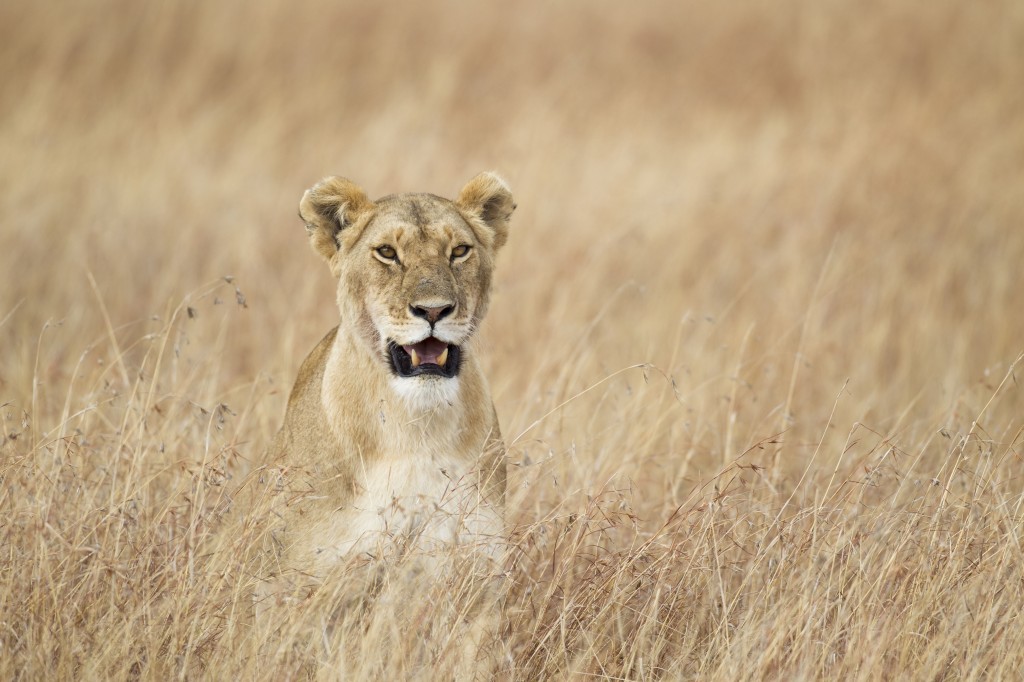Michael Wood travelled on our 'Wildlife of Kenya's Masai Mara' holiday and submitted this entry to our writing competition.
Lion, Kenya
‘Isn’t it a shame how wildlife programmes always seem to focus on the sex and the violence?’ one of our party reflected. ‘It’s probably only a tiny part of it, yet they make it seem like a war zone.’
‘I mean, look how peaceful it all is.’
It was true. Graceful impala, little tail-wagging Thomson’s Gazelles, Warthogs on their front knees, as if praying, and fantastical Zebras, looking like Vivienne Westwood creations in their intricately striped suits, were tranquilly grazing. A herd of Elephants of different sizes moved lugubriously through the landscape.
This was our second of six days on safari and, the afternoon before, we had experienced that Jurassic Park moment of first seeing these archetypal species all around us, so close and so free.
‘There are rather a lot of skeletons lying around, though,’ another of our party observed.
It was about 7am and we had been out on the Masai Mara for about half an hour, having been woken from our slumbers by the smell of freshly brewed coffee delivered to our tents before dawn.
There were five of us in our safari van and four in each of the other two, making a total of 13 on Naturetrek’s Bargain Mammal Tour. We had met in the dark at Nairobi Airport, some three nights before and, in the beautiful surroundings of Joy Adamson’s Elsamere on Lake Naivasha (now a conservation centre), had bonded into a relaxed company of friends, united by a common interest in wildlife and travel.
And the gel for the group was our team of three expert guides, Davies, Peter and Ken, who not only navigated us around the country, spotting the wildlife and telling us all about it, but also steered us with ‘style’ (Davies’s word) through the intricate local customs, including the thorny subjects of tipping and when it was appropriate to take photos.
But back to that clear, fresh morning: in the half-hour since we’d made the short walk from our tents, over the bouncing, swaying swing bridge from Ilkeliani Camp to the three vans, Peter, our driver for the day, had pointed out a Spotted Hyena and her cub skulking in some bushes and a Lappet-face Vulture perched in a tree.
Shortly afterwards, we watched as young Topi bucks clashed heads in combat, then almost collided with the van as they bounded boisterously away.
Later, a gathering of vultures drew our attention and Peter steered the vehicle into position so that we would have front-row seats for the theatre to come.
Half a dozen vultures, both Lappet-faced and White-backed, were scrapping over a cow’s carcass and, as we watched, more and more of the scavengers swooped in. Soon there were about 20 birds in a frenzy of wings, feet and beaks.
As I watched enthralled, all thoughts of peace and tranquillity forgotten. I was replaying all those wildlife documentaries in my head, imagining the breathless voice of David Attenborough describing the action.
The bush telegraph quickly spread news of the kill and a Steppe Eagle, barely pausing in flight, grabbed some entrails and was off again. Soon a couple of hyenas and two Black-backed Jackals were circling the scene, waiting for their moment to move in. The window of opportunity was rapidly running out for the squabbling vultures.
But the hyenas and jackals held back. Perhaps they had scented a higher predator on the morning air and, sure enough, soon a lone lioness could be seen pacing slowly and deliberately towards the kill. As she drew nearer it became apparent that she was limping heavily.
We waited, cameras poised for an explosion of movement, but the vultures quietly melted away from the carcass.
The lioness stood over the remains for several minutes, perhaps scenting the air to check the killers were not still around. Then, satisfied, she chewed on some offal as a kind of hors d’oeuvres, before settling down to the main course.
Drama over, we headed away from the war zone to a quiet corner of the Mara for breakfast under an acacia tree.
That was just one of many highlights of our 10-day trip. We watched a young Hippo munching on the Elsamere lawn, a Leopard prowling, Lion cubs playing with a plastic bag and a Cheetah walking right in front of our vehicle, saw fish eagles, high-stepping African Jacanas, pelicans and storks, three types of bustard, six species of kingfisher, sunbirds, bee-eaters, hornbills and several Lilac-breasted Rollers, which are every bit as beautiful as they sound.
We saw four out of the ‘big five’ – only the Black Rhino eluding us – but as Davies wisely said: ‘You have to have something to come back for.’
Read more about our 'Wildlife of Kenya's Masai Mara' holiday.



 Loading search...
Loading search...
